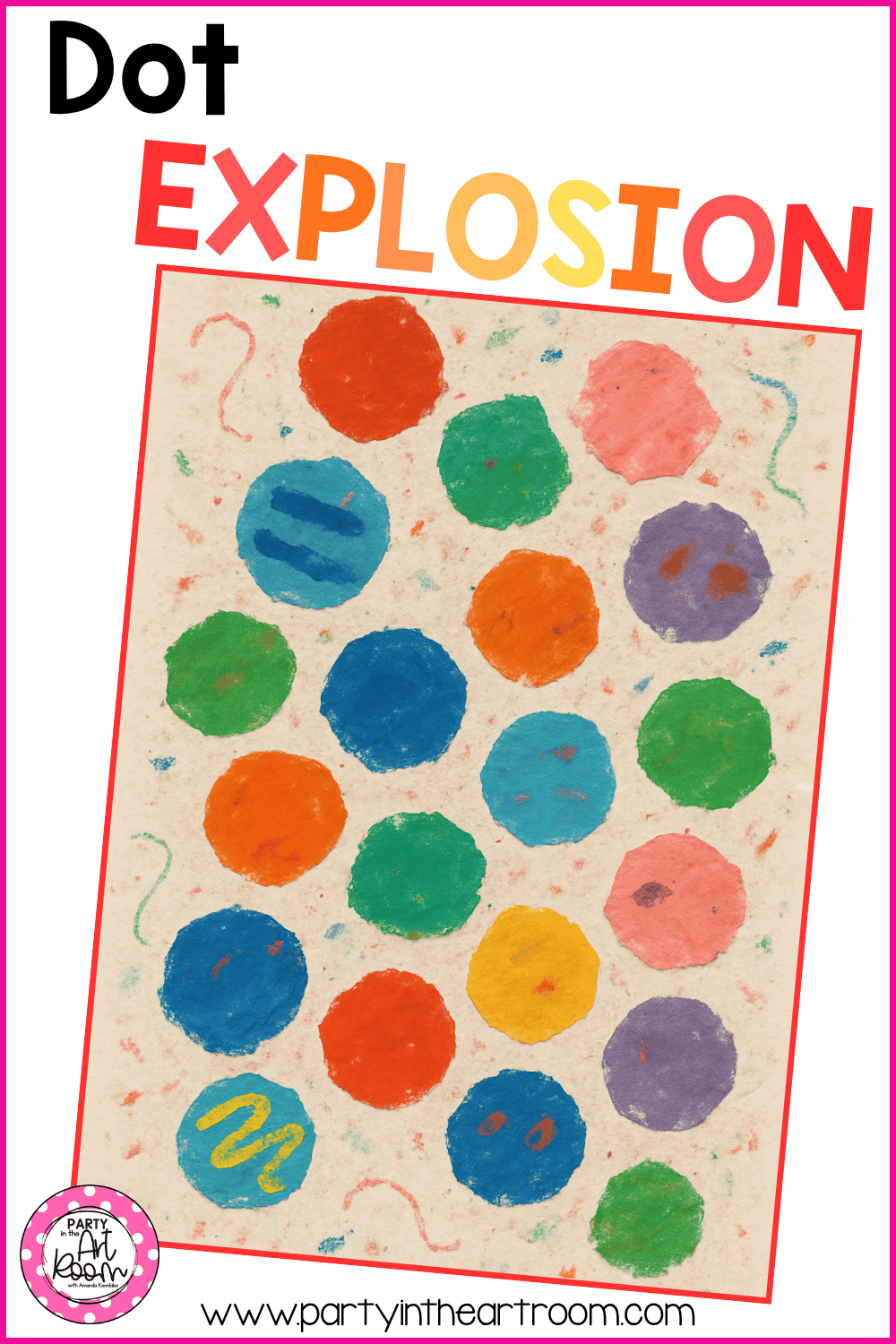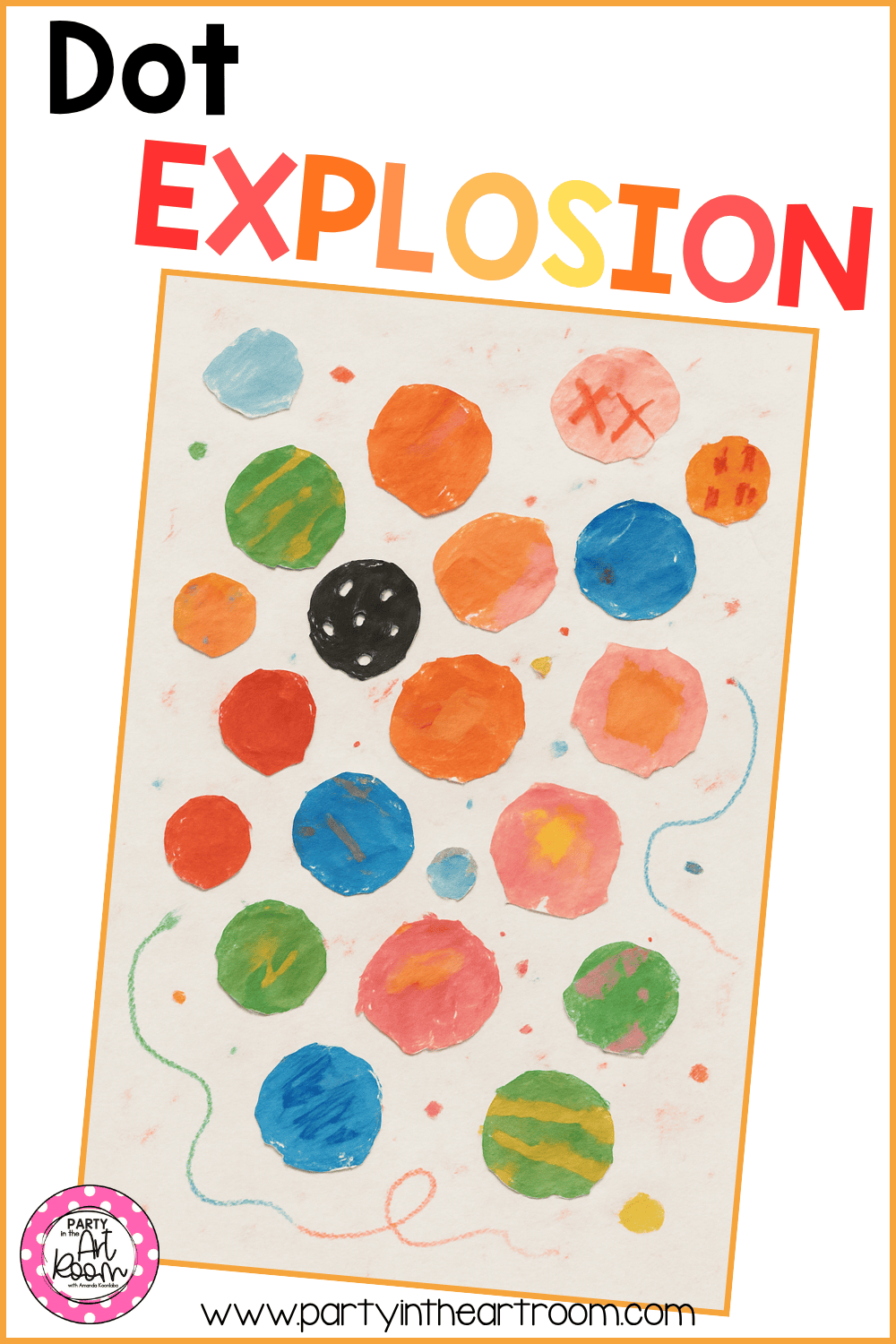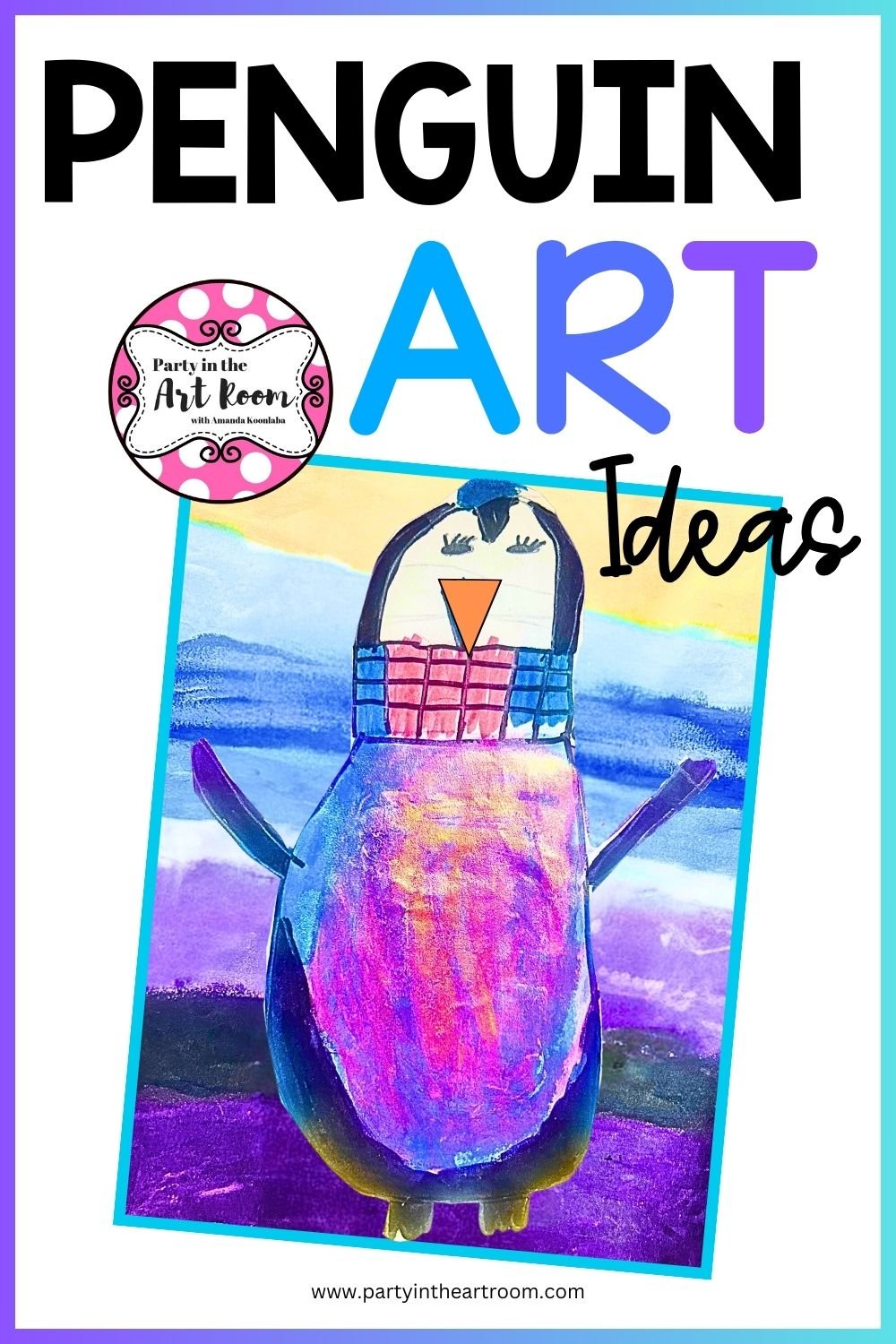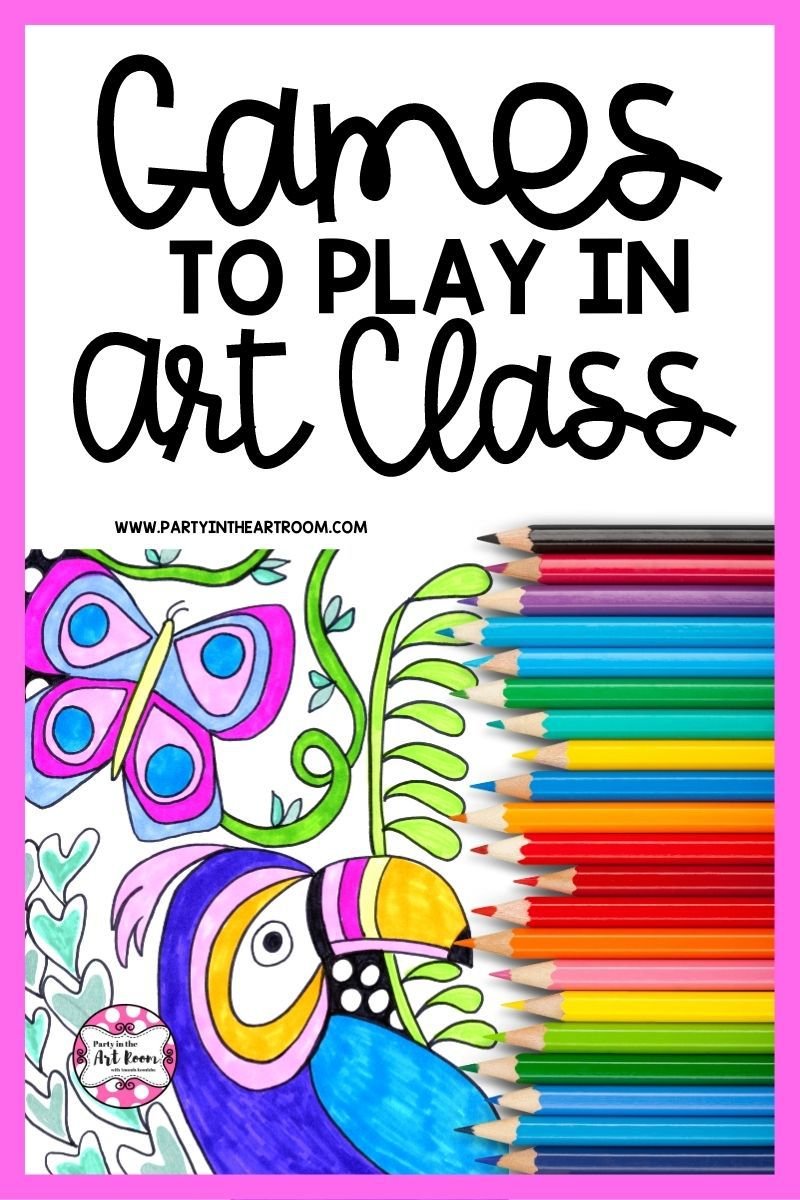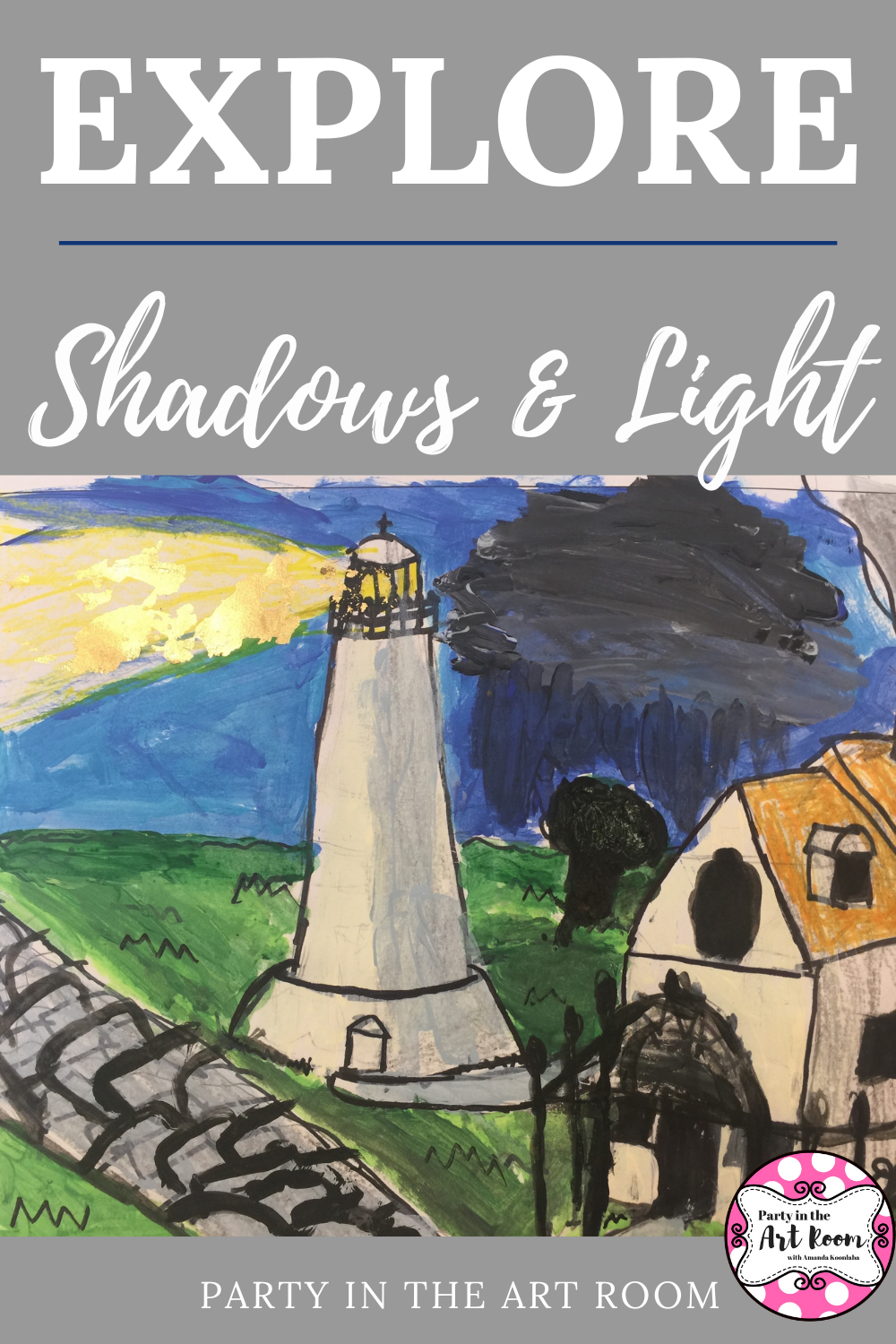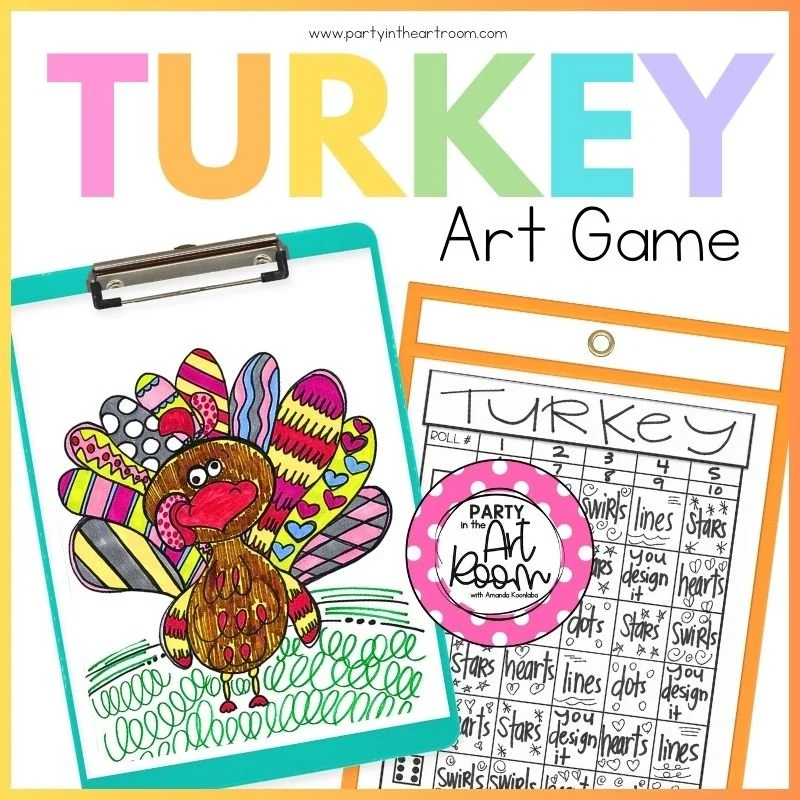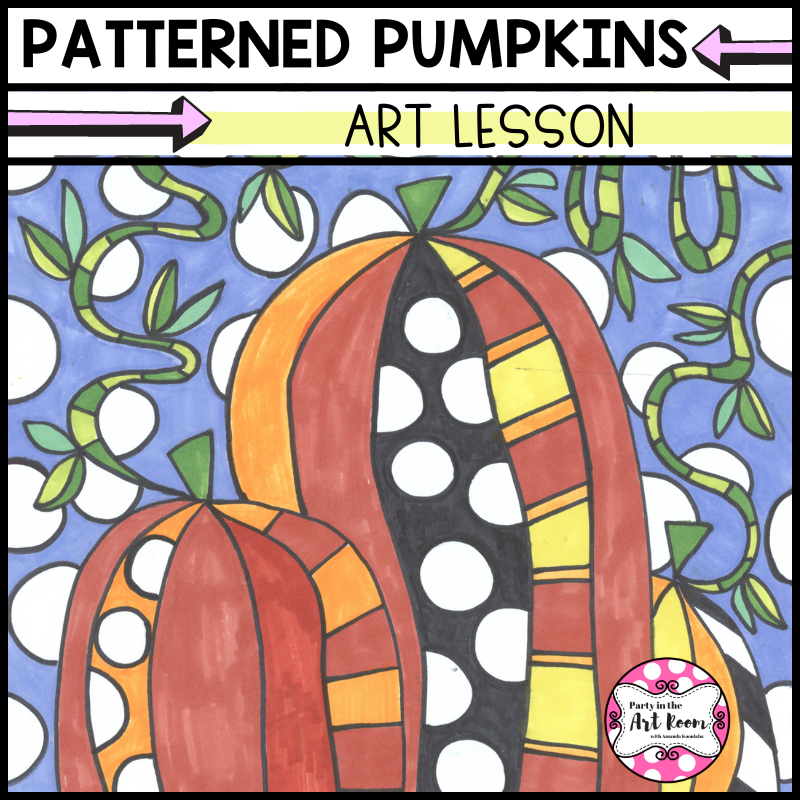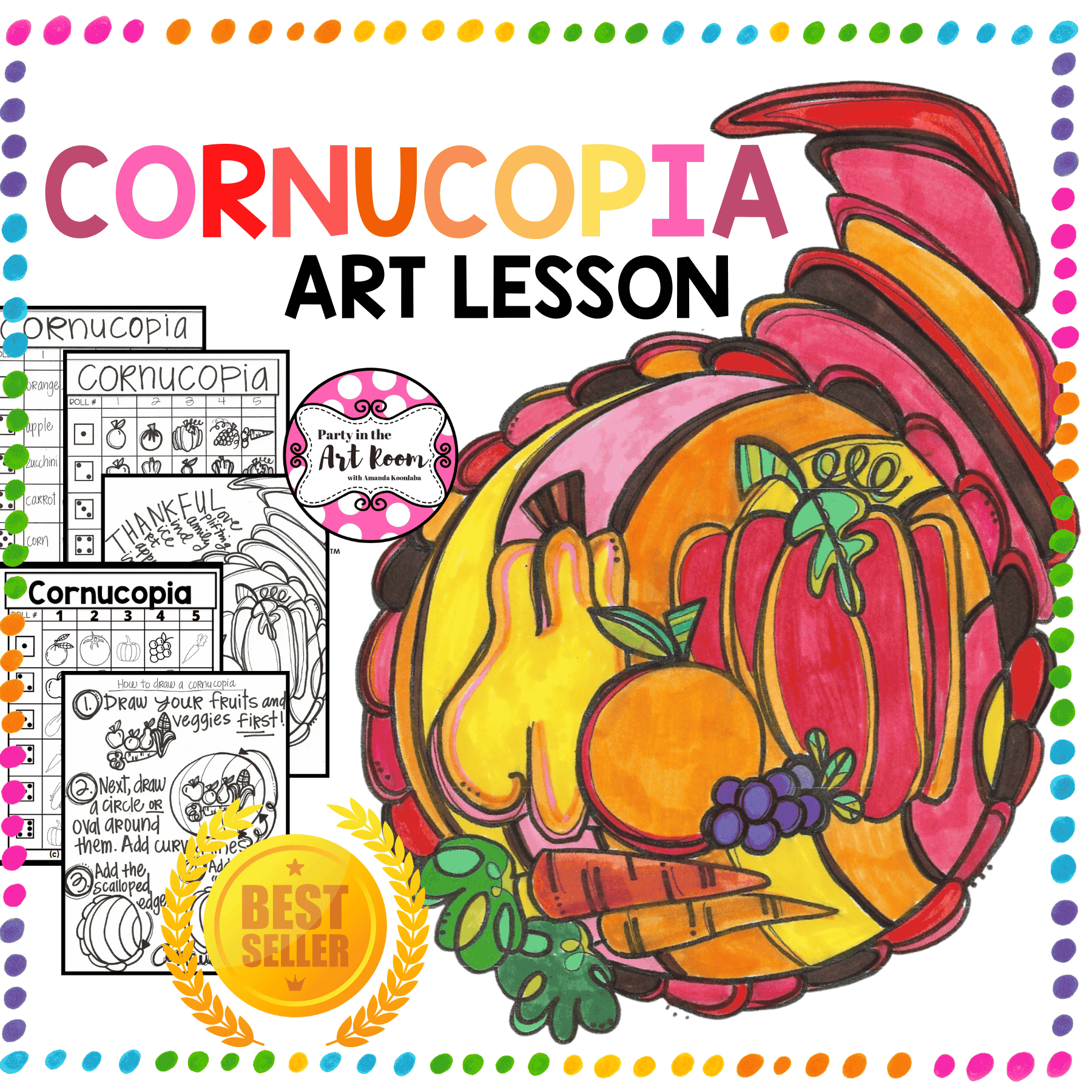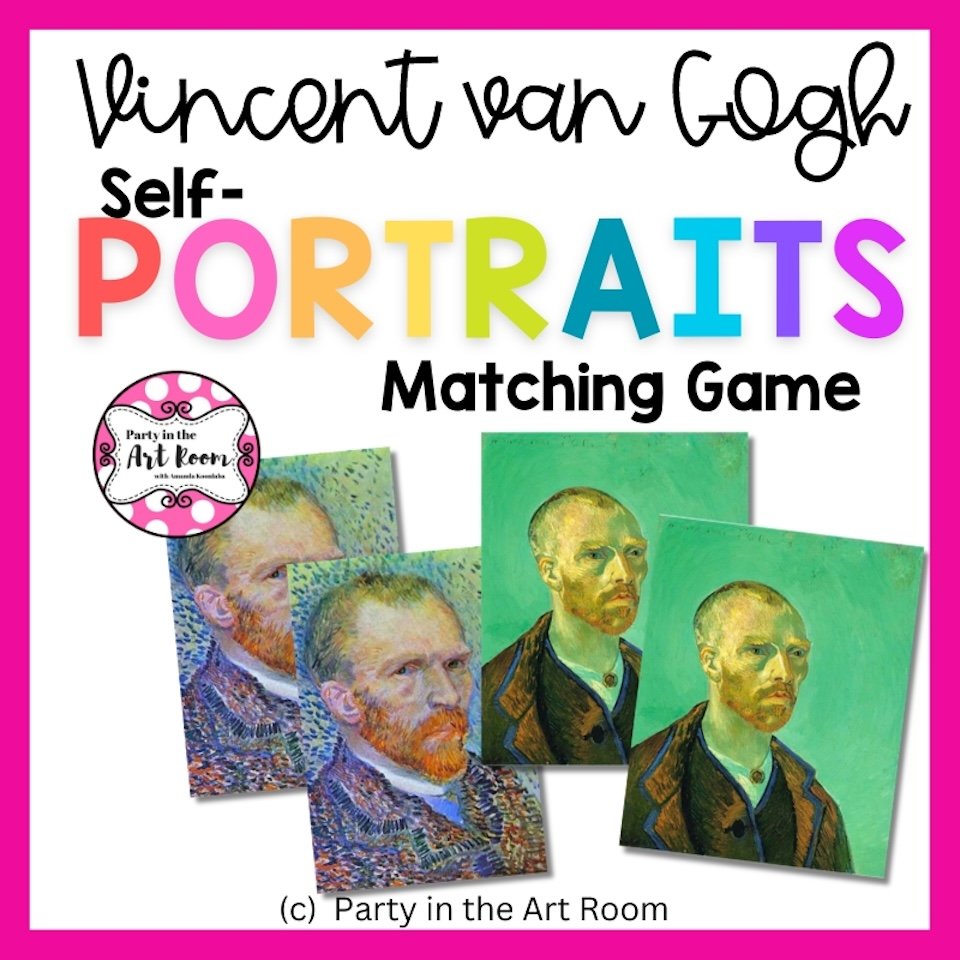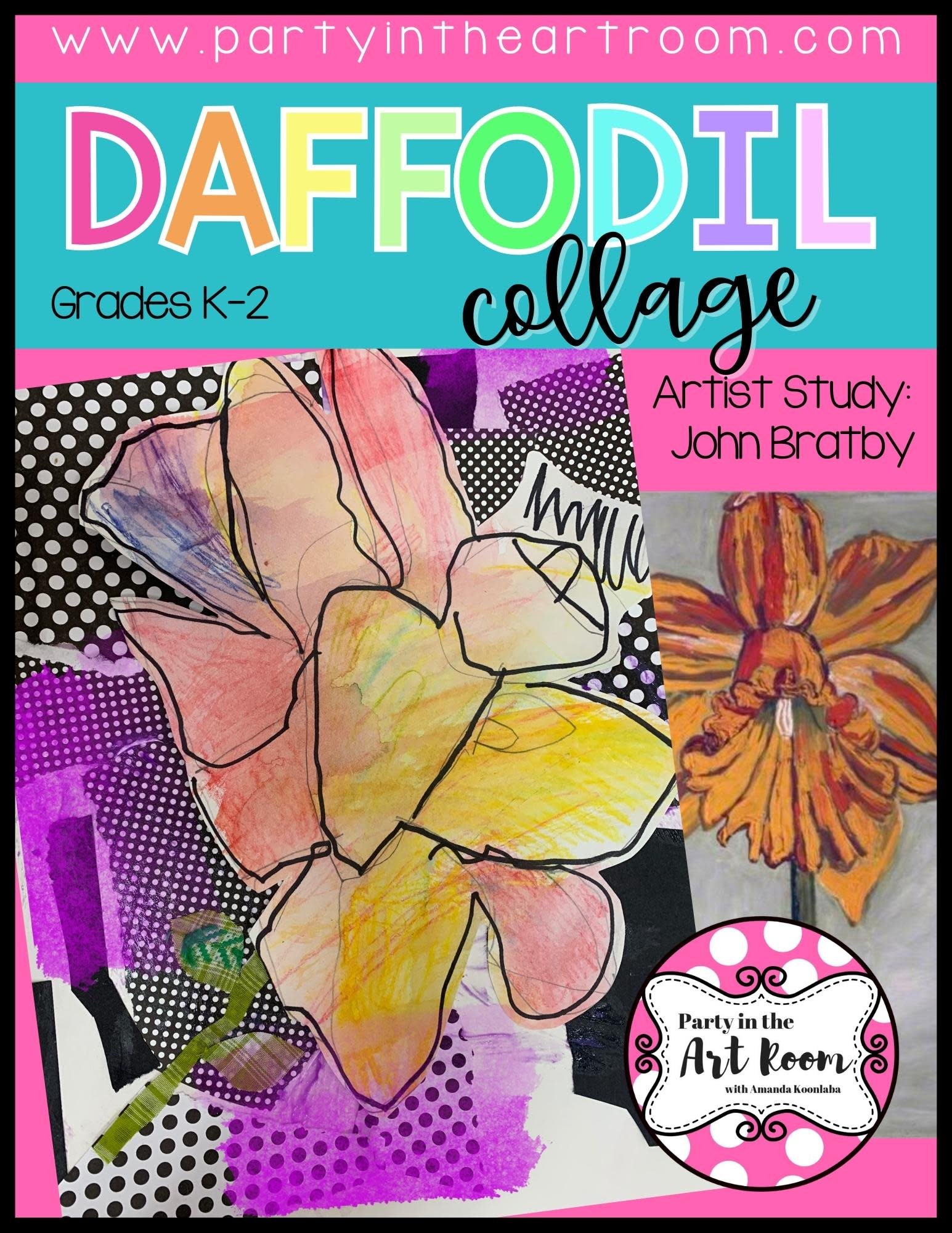Dot Explosion: A Bold and Easy Abstract Art Lesson for Kids
I have a confession: I’ve been hoarding condiment cups.
You know the little plastic containers that hold ranch dressing or ketchup when you get takeout? Yep. I had a whole sleeve of them, thanks to a generous lunch lady who saw me eyeing the extras in the cafeteria. Naturally, I turned them into an art lesson.
This project is one of those “looks fancy but is secretly simple” wins. We were learning about harmony in art — how different things can still go together beautifully — and I wanted a project that would give students a chance to collaborate, experiment, and see the beauty in their combined work.
Here’s how it went down.
🖌️ The Art Activity: Painted Circles & Confetti Lines
First, my students painted big sheets of paper together. It was all about mark-making and color mixing — no rules, just shared space and messy joy. Once everything dried, I passed out the condiment cups and we used them to trace circles on the painted paper. Each student cut out a handful of circles in whatever colors they liked best.
Then came the fun part: patterns! Using oil pastels, students decorated their circles with dots, lines, squiggles — whatever felt fun. Some went abstract. Some tried symbols or emoji-style faces. No two were alike.
To finish the piece, they glued the circles onto manila tagboard and added confetti-style lines and dots all around. The final results? A celebration of individuality and togetherness. Every circle different, but somehow the whole thing worked — and that’s exactly what harmony looks like.
🎨 Art Concepts & Vocabulary
This project helped us explore:
● Harmony – how different colors, shapes, and styles can still feel unified
● Shape – especially repetition of circles as a design element
● Texture – both visual and physical from painted paper and oil pastels
● Pattern – lines, dots, and symbols added by students
It also encouraged personal choice, creative risk-taking, and the ability to look at someone else’s work and still see how it fits with your own — a powerful art and life lesson.
🏫 Classroom & Homeschool Adaptations
This project works beautifully with any group size. In a homeschool setting, try using one large paper per child and have siblings or friends trade painted papers before tracing circles — it builds the same collaborative energy.
If you’re short on time, you can prep the painted paper ahead and let students jump right into cutting, decorating, and composing.
Bonus tip: If your cafeteria staff is as kind as mine, ask them for a sleeve of clean condiment cups. They make the best circle tracers.
🛠️ Materials We Used
● White tagboard (for painting)
● Condiment cups (for tracing circles)
● Scissors
● Glue
📌 You Might Also Like:
● Art Meets Science: Paper Making – If you love layering texture and collaboration, this one’s for you.
● Intro to Art for Kids: An Art History Workbook for Kids – A colorful and interactive way to introduce kids (especially Grades 5–8) to 26 iconic artworks from around the world. Great for homeschool or classroom!
● Desert Cactus Color Study Art Lesson – A fun, low-prep way to explore warm and cool color harmony with watercolor techniques. It’s perfect for hallway displays and packed with teacher tools.
You Might Also Be Interested In:
Inside this free PDF, you'll find a treasure trove of van Gogh's self-portraits, each capturing the essence of the artist's unique style and introspection. From his early works to his later masterpieces, this collection showcases the evolution of van Gogh's self-representation throughout his remarkable career.
As students pair the self-portraits, they will develop visual recognition skills, explore color and brushstroke techniques, and gain a deeper understanding of van Gogh's artistic journey.
Affiliate Disclosure: Party in the Art Room is supported by its audience. When you purchase through links on this site, a commission may be earned.Hi! I’m Amanda. Teaching children to be creative thinkers is my greatest joy. I’m here to help you bring that same joy to your classroom.
This guide is packed with 25 ideas for using art to teach math and ELA. It’s arts integration for the win!
I want all students to feel successful in the art room, so I created a standards-based Daffodil Collage lesson to do just that! The lesson includes an artist study, student reflection, and more, so push your artists to their full potential.
